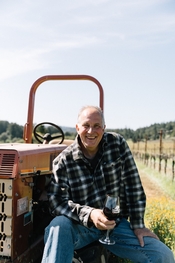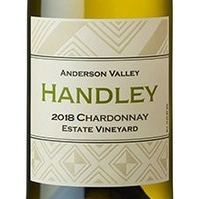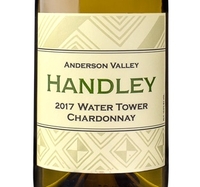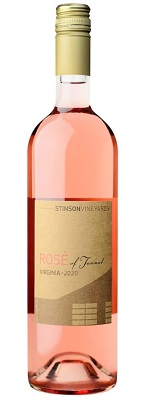|
|
 |
|
August 18, 2021
 The 2017 vintage represents the 40th anniversary of I Sodi di S. Niccolò, a truly iconic Italian wine. It was likely the first Super Tuscans from Chianti Classico area using autochthonous grapes. It showed—and continues to show—the extraordinary heights the wines from the Chianti Classico region can reach. When it debuted in 1977, it did not conform to the regulations for Chianti Classico, which required roughly 10 percent of the blend to come from white grapes. It was, and still is, a blend of only Sangiovese (~85%) and Malvasia Nera. Hence the IGT Toscana official designation then instead of the DOC. Although now, with the change in regulations for Chianti Classico, it could be labeled under that DOCG, Castellare in Castellina has opted to continue to label it as IGT Toscana. The 2017 vintage represents the 40th anniversary of I Sodi di S. Niccolò, a truly iconic Italian wine. It was likely the first Super Tuscans from Chianti Classico area using autochthonous grapes. It showed—and continues to show—the extraordinary heights the wines from the Chianti Classico region can reach. When it debuted in 1977, it did not conform to the regulations for Chianti Classico, which required roughly 10 percent of the blend to come from white grapes. It was, and still is, a blend of only Sangiovese (~85%) and Malvasia Nera. Hence the IGT Toscana official designation then instead of the DOC. Although now, with the change in regulations for Chianti Classico, it could be labeled under that DOCG, Castellare in Castellina has opted to continue to label it as IGT Toscana.
The 2017 I Sodi di S. Niccolò represents an enormous achievement of the winemaking team at Castellare di Castellina because the weather during the growing season was, as they say, “difficult.” That’s an understatement. One prominent Chianti Classico producer told me that you could forget about the 2017s. Well, that’s clearly not the case as evidenced by this wine. The I Sodi di S. Niccolò vineyard, located in the Castellina subzone of Chianti Classico, has a great advantage in hot, dry years, such as 2017. Its 400-plus meters above sea level elevation and its south eastern facing location in an amphitheater that catches the winds coming from the Val d’Elsa mitigate the heat.
The soil of the vineyard is a classic mix of galestro and alberese, ideal for Sangiovese and other autochthonous varieties, according to Daniele Cernilli, one of Italy’s top wine authorities.
The wine is vinified in stainless steel and then aged in barrels, half of which are new, for anywhere from between 24 and 30 months, depending on the vintage.
The 2017 I Sodi di S. Niccolò is gorgeous. It’s explosive, yet not flamboyant. It has power and persistence, yet retains incredible elegance. It delivers the panoply of flavors you’d expect from a great wine—succulent cherry-like fruitiness, earthy and spicy savory notes—without any of them dominating. You feel the effect of oak aging without tasting it. The tannins, which could be accentuated in a hot vintage, are fine and supple. The acidity, which could be diminished in a hot vintage, is not, and provides uplifting energy. The alluring hint of bitterness in the finish demonstrates that the grapes were not over ripe, despite the reputation of the vintage. I would echo what Cernilli remarked during a tasting of this wine, “It’s a wine that reflects its site more so than the vintage.” It’s remarkably enjoyable now, which, as the late Louis Latour from Burgundy, reminded me, “great wines always taste great.” Its impeccable balance and grace indicate decades of development ahead of it. I hate to call an $85 wine a bargain, but compared to what’s in the marketplace today, it is.
Michael Apstein
Posted by Michael Apstein at 4:14 PM
|
|
August 10, 2021
Milla Handley graduated from UC Davis with a degree in Fermentation Science in 1975. She moved to the Anderson Valley in Mendocino County in 1978 to work for Jedd Steel at Edmeades. Handley Cellars became a bonded winery in 1982, the same year that Anderson Valley became an AVA. In 2005, her vineyard was the first California Certified Organic vineyard in Anderson Valley. Are you seeing a pattern here? Handley was clearly a pioneer, and she created an enduring legacy in the winery and her 59-acre property in the northwest corner of the Anderson Valley, called the Deep End. Sadly, she died in 2020, but she left behind a team who had learned her philosophy well. Her daughter, Lulu Handley, is the proprietor and co-winemaker with Randy Schock.
Schock and I recently had the opportunity to taste three Handley Chardonnays and have a wide-ranging conversation. He had just finished judging a canned wine competition. Turns out, they make canned wines from Handley grapes for a canned wine company called Maker. Handley is one of several wineries involved.  Schock noted that Milla would have approved. “Wine in cans helps people feel more comfortable. That’s our job. It’s not just for hipsters. It’s for Moms. They don’t want to waste wine. They want to enjoy them and don’t want to have to open a whole bottle.” To make that point, the stamp on the bottom of the Pinot Noir can says “Mom would like it.” Schock noted that Milla would have approved. “Wine in cans helps people feel more comfortable. That’s our job. It’s not just for hipsters. It’s for Moms. They don’t want to waste wine. They want to enjoy them and don’t want to have to open a whole bottle.” To make that point, the stamp on the bottom of the Pinot Noir can says “Mom would like it.”
The first Chardonnay we tasted was the Method Champenoise Blanc de Blancs 2015. It is a charming sparkler made from 100 percent Chardonnay grapes grown in the Handley family’s Block 3B, from some of the first vines planted in the Handley vineyard. Tiny bubbles shine in the pale golden wine and lift enticing aromas of apple, lemon and freshly baked pastry. It is light and lively on the tongue with flavors of fresh pears, Granny Smith apples, and a touch of spiced, toasty nuts. A lush roundness in the wine’s texture balances the bubbles and bright acidity.
 For the 2008 Estate Vineyard Chardonnay, Schock focuses on bringing out the fruit and achieving balance. To that end, he aims to for a low level of malolactic fermentation to tone down the sharpness of the wine’s acidity. Subtle barrel influence lends a bit of spice in the background and creates a sense of roundness. He notes that 2018 was a warm vintage, so there is a bit more tropical fruit in the flavors than might be found in a cooler year. It is a smooth and plush wine with aromas recalling ripe, spicy apples and pears along with a citrus note. The flavors are of ripe and juicy pears, honeycrisp apples and a hint of pineapple juxtaposed against citrusy acidity. For the 2008 Estate Vineyard Chardonnay, Schock focuses on bringing out the fruit and achieving balance. To that end, he aims to for a low level of malolactic fermentation to tone down the sharpness of the wine’s acidity. Subtle barrel influence lends a bit of spice in the background and creates a sense of roundness. He notes that 2018 was a warm vintage, so there is a bit more tropical fruit in the flavors than might be found in a cooler year. It is a smooth and plush wine with aromas recalling ripe, spicy apples and pears along with a citrus note. The flavors are of ripe and juicy pears, honeycrisp apples and a hint of pineapple juxtaposed against citrusy acidity.
 The Water Tower Chardonnay is drawn from the cooler 2017 vintage. Unlike the Estate Chardonnay, the closure is a screw cap. It sees no malolactic fermentation to appeal to those who prefer tank-fermented Chardonnay. At this point Schock posed a rhetorical question: “Does the market drive what I do as a winemaker?” He noted that Handley is a mature brand, and that Milla recounted earlier criticisms such as that the wines need to be unfiltered or have more ripeness. Her stance to the contrary was that Handley wines are made in a house style. That style includes lower alcohol, lower levels of ripeness and less oak. The Water Tower Chardonnay epitomizes that style. The grapes come from older Chardonnay blocks that include Robert Young clones among others. The juice is tank fermented and vinified with no malolactic fermentation, no oak contact and 12.9 percent alcohol. The Water Tower Chardonnay is drawn from the cooler 2017 vintage. Unlike the Estate Chardonnay, the closure is a screw cap. It sees no malolactic fermentation to appeal to those who prefer tank-fermented Chardonnay. At this point Schock posed a rhetorical question: “Does the market drive what I do as a winemaker?” He noted that Handley is a mature brand, and that Milla recounted earlier criticisms such as that the wines need to be unfiltered or have more ripeness. Her stance to the contrary was that Handley wines are made in a house style. That style includes lower alcohol, lower levels of ripeness and less oak. The Water Tower Chardonnay epitomizes that style. The grapes come from older Chardonnay blocks that include Robert Young clones among others. The juice is tank fermented and vinified with no malolactic fermentation, no oak contact and 12.9 percent alcohol.
When asked what he would like to see for the future of the wine business he said, “Diversity, meaning, how we can incorporate different cultures, getting away from a ‘pure Euro’ model? Winemaking is really about people. Milla taught me that early on. She told me to always make time for people, even if I only have a minute or two. She said ‘Remember, it’s just wine.’ She didn’t mean to diminish what we do, but rather to emphasize that we bring comfort, happiness, bring people together.”
Schock added, “We get this title, Winemaker, but we’re not doctors, not royalty. Don’t take yourself so seriously. Take the product seriously, be good to people. Don’t get lost in the luxury aspect of this industry. Some people do. Luckily I’m a pretty down-to-earth guy working out in the Anderson Valley and very proud to be engaged at a woman-owned business that’s diverse and organically farmed.”
Posted by Rebecca Murphy at 12:57 PM
|
|
August 1, 2021
The Tannat grape, a notoriously robust variety whose origins lie in the rugged mountainous region between France and Spain, has adapted very well to Virginia’s relatively tame landscape and climate. However, no one in the world who works in viticulture—including those in Virginia—would be foolish enough to suggest that winegrowing was a worry-free enterprise. Fires, floods and frost: these “F words” conjure up a meaning that is similar to the most famous “F word” in resonance but more tangible for people whose livelihood depends on the fruit of the vine.
 In the spring of 2020 a far-reaching incursion of cold, Arctic air was responsible for major frost events that hit vineyards in Virginia, reaching as far south as northern Georgia and severely impacted vineyards in North Carolina and Tennessee as well. On the morning of May 9, 2020, the frost hit Crozet, Virginia, wiping out almost all of Stinson Vineyard’s production. The good news is that Stinson was able to source fruit from nearby Horton Vineyard, which fared somewhat better than many of its neighbors that spring. One result of this is Stinson’s 2020 Rosé of Tannat. In the spring of 2020 a far-reaching incursion of cold, Arctic air was responsible for major frost events that hit vineyards in Virginia, reaching as far south as northern Georgia and severely impacted vineyards in North Carolina and Tennessee as well. On the morning of May 9, 2020, the frost hit Crozet, Virginia, wiping out almost all of Stinson Vineyard’s production. The good news is that Stinson was able to source fruit from nearby Horton Vineyard, which fared somewhat better than many of its neighbors that spring. One result of this is Stinson’s 2020 Rosé of Tannat.
Stinson Vineyards, Monticello (Virginia) Rosé of Tannat 2020 ($23): With its alluring rosy/orange color, delicate flavors and lively acidity this is a refreshing summery wine. Unlike the overt tannins typically found in Tannat red wines, this rosé is relatively smooth and succulent on the palate. While it has distinctive fruit flavor the wine is nonetheless perfectly dry, and offers hints of floral in the aroma. A tasty wine on its own, Stinson’s Tannat is a good companion to summery food, from Vichyssoise to cold meat and cheese plates.
90 Points
Posted by Marguerite Thomas at 1:50 PM
|
|
 |
|